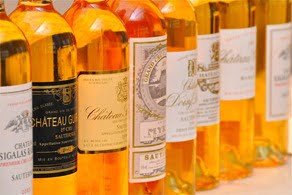Which Wines Can Age? Let’s ask an English Lady Named Jancis…
November 9, 2010Aging wine is a tricky thing. I get asked a lot about which wines can age, so I decided it’s time to set the record straight and refer you to a lady named Jancis Robinson.
What does she know? Well, the answer comes in 2 parts:
-Firstly she’s English.
-And if that isn’t enough for you, she is also one of only a handful of female Masters of Wine in the world.
She proposes that only around the top 10% of all red wine and top 5% of all white wines can improve significantly enough with age to make drinking more enjoyable at 5 years of age than at 1 year of age. Additionally, Robinson estimates, only the top 1% of all wine has the ability to improve significantly after more than a decade. It is her belief that more wine is consumed too old, rather than too young, and that the great majority of wines start to lose appeal and fruitiness after 6 months in the bottle.
The below wines, Jancis proposes have little to no aging potential:
-German QBAs
-Asti and Moscato Spumante 
-Rosé and blush wines like White Zinfandel
-Heavily branded wines like Yellow Tail, Mouton Cadet, etc.
-European table wine
-American jug & box wine
-Inexpensive varietals (with the possible exception of Cabernet Sauvignon)
-The majority of Vin de pays
-All Nouveau wines
-Vermouth
-Basic Sherry, Ports
These are the wines that Jancis suggests have potential for aging:
-Botrytized wines (5–25 yrs) 
-Chardonnay (2–6 yrs)
-Riesling (2–30 yrs)
-Loire Valley Chenin blanc (4–30 yrs)
-Hunter Valley Semillon (6–15 yrs)
-Cabernet Sauvignon (4–20 yrs)
-Merlot (2–10 yrs)
-Nebbiolo (4–20 yrs)
-Pinot noir (2–8 yrs)
-Sangiovese (2–8 yrs)
-Syrah (4–16 yrs)
-Zinfandel (2–6 yrs)
-Classified Bordeaux (8–25 yrs)
-Grand Cru Burgundy (8–25 yrs)
-Spanish Tempranillo (2–8 yrs)
Note that vintage, wine region and winemaking style can influence a wine’s aging potential so Robinson’s suggestion of years are very rough estimates of the most common examples of these wines.
This entry was posted in Facts, News. Bookmark the permalink. ← A New Study Shows Americans Feeling Less Than Wise About Wine Free Fall Food Festival Nov. 20 at Native Sun Natural Foods →










